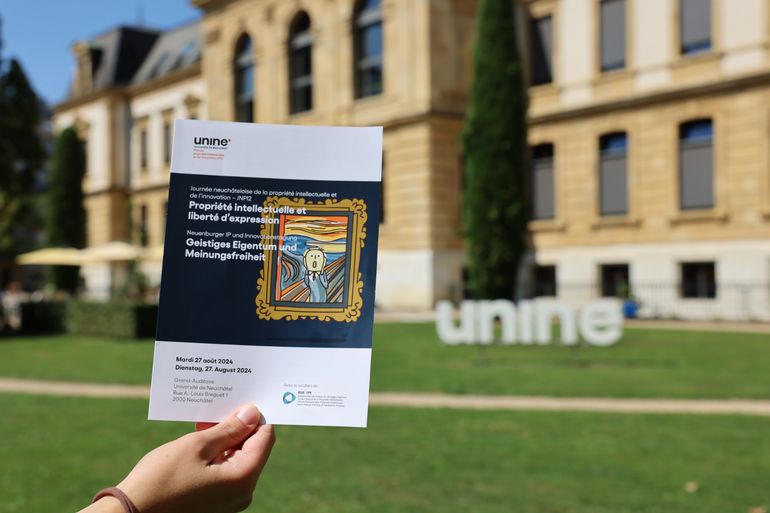The 14th Innovation Day at the University of Neuchâtel provided a platform for experts from the sector to exchange ideas on freedom of expression and Swiss law and to formulate measures that could be applied to each respective legal area. This year’s edition of the event, which was held in both French and German in cooperation with the Swiss Federal Institute of Intellectual Property (IPI), focused primarily on intellectual property law.
For IP professionals
This is the portal for professionals working in the field of intellectual property. Here you'll find direct access to all necessary resources.
Quick links
Where is the boundary between freedom of expression and intellectual property (IP) rights?
Finding a happy medium between freedom of expression and intellectual property protection is a complex and often hotly debated topic. On 27 August, around 50 people from German- and French-speaking Switzerland gathered at the Faculty of Law at the University of Neuchâtel to discuss the following question: Is there a fair balance between freedom of expression and intellectual property rights?

Limits to freedom of expression in trade mark law
Daniel Kraus opened the conference by emphasising that the aim was not to reinforce the differences between French- and German-speaking regions, but to move closer together linguistically and thematically.
In his presentation, Kraus showed a dog’s toy that had the shape and colour of a Jack Daniel’s bottle but was labelled ‘Bad Spaniels’ and made a squeaking noise when squeezed. Does the toy poke fun at the trade mark? Or does this example fall under freedom of expression? What legal practice should apply in such cases? The US Supreme Court ruled on this case on 8 June 2023 (see Jack Daniel’s Properties, Inc. v. VIP Products LLC).
The relationship between freedom of expression and intellectual property is comprehensively regulated in copyright law. In other areas of intellectual property, however, it raises more questions, particularly in trade mark law, where there are no exceptions.
The conflict between parody and copyright
Copyright and freedom of expression clash in particular in the area of parody. Article 11 paragraph 3 of the Copyright Act states: “It is permissible to use existing works for the creation of parodies or other comparable variations on the work.” There are still many unanswered questions regarding the term ‘comparable variations’, as it hasn’t yet been fully clarified what the term does and doesn’t cover (e.g. mashups, remixes, memes, GIFs, sampling). A prime example of this is the ‘Metal on Metal’ case currently before the European Court of Justice in Luxembourg. A hip-hop producer is accused of utilising Kraftwerk’s song ‘Metal on Metal’ without permission in 1997. He used a two-second excerpt to create a continuous rhythm for a song.
This clash puts public platforms such as YouTube in a tricky position, as they are liable if copyright is infringed. The social media platform uses special filters to prevent infringement. As a result of these detection systems, videos are sometimes removed even though they fall within the limits of parody or comparable variations, which the algorithm doesn’t recognise. Does this pose a threat to artistic freedom?
The European Court of Justice is expected to rule on the ‘Metal on Metal’ case next year. It’s as yet unclear whether the ruling will have an impact on Swiss case law. The European Union will undoubtedly be guided by the judgment, however.
Current status of related rights
In her talk, Sabrina Konrad, Deputy Head of Copyright at the IPI, spoke about the current status of the planned related right for media and the revision of the Copyright Act. The aim of this right is to require large online services to pay a fee to media companies in future if they use ‘snippets’, i.e. small text excerpts. The Federal Council has asked the Federal Department of Justice and Police to draw up a dispatch on the subject. Parliament will then have the opportunity to express its opinion and take a political decision.

